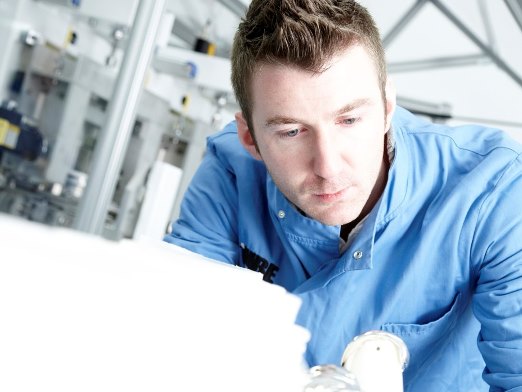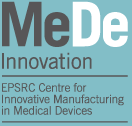Day in the Life: Dr Tony Herbert – Developing acellular biological scaffolds for anterior cruciate ligament replacement

September 3, 2015
The ‘Day in the Life’ series of blog posts gives an insight into some of the people and roles that support the delivery of the MeDe Innovation research challenges.
The second ‘day in the life’ post comes from Dr Anthony Herbert, a Post-Doctoral Research Fellow at the University of Leeds, who recently won an EPSRC E-TERM landscape fellowship – an exclusive opportunity to for exceptional scientists from tissue engineering and regenerative medicine communities to develop a leadership role in cross-disciplinary, large scale, translational interface science:
The anterior cruciate ligament (ACL) is the most injured of all ligaments in the body and its rupture is a very common sports occurrence. Many people associate this injury simply with football players, but it is becoming more frequent as people enjoy more active lives such as skiing holidays. Approximately 40,000 ACL surgeries are performed each year in the UK alone. This involves replacement of the damaged ligament using a tissue graft harvested from elsewhere in the patient’s body or using a graft donated to a tissue bank. However, both these options have their drawbacks. Grafts harvested from the patient’s own body mean extra surgery and longer recovery time, while donated grafts may cause an immune reaction. How amazing would it be to have a graft to replace ACLs that doesn’t suffer from these problems and is available “off-the-shelf” to surgeons?
Well, this is essentially what decellularised tissues can provide. These are tissues stripped of all their cells (the part that causes an immune response), leaving just the natural outlying biological structure or ‘scaffold’. Therefore, these can be scaffolds from human donors or even animals such as pigs, and once they’re implanted a patient’s own cells will re-populate them.
I’m a postdoctoral research fellow working as part of a team of engineers, biologists and clinicians in the development of decellularised tissues for replacement of the ACL. As an engineer, my job is to make sure that these scaffolds are mechanically suitable to replace the ACL and that no damage has been done to the tissues when removing all the cells.
I’ve been at the University of Leeds in this role since late 2011. Before this, I completed my Masters and doctorate of engineering at the University of Strathclyde, Glasgow and a bachelor’s degree in biomedical engineering at the National University of Ireland, Galway. At each stage of my academic career I’ve always maintained a keen interest in the mechanics of biological materials such as cartilage and ligaments. From an engineering perspective, I have always found these materials are quite fascinating and unique. Nature never creates without a reason, and understanding how biological tissues are composed and work mechanically gives insight into why they are created in the way they are. This knowledge can then be put to good use in creating replacements for these tissues should they happen to fail like with the ACL.
Recently, I have been awarded an EPSRC E-TERM landscape fellowship which allows early career researchers such as me the opportunity to establish themselves as research leaders in their field in academia. I was chosen based on a proposal I submitted to continue the work on biological scaffolds for ACL repair. I want to use the knowledge I have gained so far to develop custom ACL replacements for a patient’s own individual needs and to optimise how these are fixed into the body. So, fundamentally, my proposal is about making sure the right patient is getting the right ACL graft for them and there is the right surgical strategy in place to implant it into them.
I am hoping this will act as a springboard to establishing a successful independent academic career. I am keen to develop my own ideas further, not just in the field of ACL repair but to other musculoskeletal tissues the body such as cartilage and bone. To this end, there is two key things I really wish to achieve; innovative research pushing new developments in tissue repair and the inspirational education of the next crop of engineers and scientists. I feel the field of academia has given so much to me and I’d quite like to give back.
